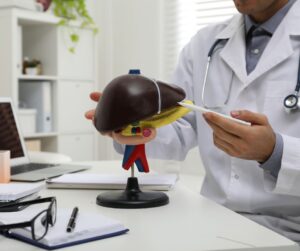Beth Sandy, MSN, CRNP
When I was growing up, many kids that I associated with started smoking cigarettes around junior high school. I am happy to say that we have really progressed since my childhood; young people as well as people of all ages are smoking less. Cigarette smoking is on the decline significantly in the United States, mostly due to several interventions including1:
- mass-reach health communications campaigns
- increases in the price of tobacco products
- comprehensive smoke-free policies in public spaces
- improved cessation strategies with insurance coverage for counseling
However, if you have been around teenagers lately, you will notice that the use of e-cigarettes, often called “vaping” or “juuling,” is wildly popular among this age group. They come in a variety of flavors and fancy packaging that is very appealing to teens. But what do we know about e-cigarette use and what should our recommendations be as oncology healthcare providers?
Electronic nicotine delivery systems (ENDS) usage has risen in 2022 with an estimated 2 million high school students using these products, which is a 24% increase from 2021.2 The American Association for Cancer Research (AACR) and American Society of Clinical Oncology (ASCO) released a joint policy statement on ENDS in fall 2022 directed at curbing its use in youth and adults.
The joint policy statement, which was published in the Journal of Clinical Oncology and Clinical Cancer Research, summarized the existing research on ENDS, as follows3:
- Although ENDS emit fewer carcinogens than smoking tobacco, preliminary evidence links ENDS use to DNA damage and inflammation, which are components of cancer development.
- Flavored ENDS are appealing to users: a 2020 survey reports that more than 82% of youths using ENDS products are using flavored products.
- Despite recent FDA restrictions on flavors other than tobacco and menthol in ENDS products, flavored products remain on the market and are increasing in popularity among school students.
- People who use ENDS are 2.9 to 4 times more likely to ever smoke tobacco than people who have never used ENDS.
The AACR-ASCO joint policy statement included these recommendations3:
- Ban all non-tobacco–flavored products that contain nicotine.
- Tax all products that contain natural or synthetic nicotine in a matter that reduces tobacco use and promotes public health.
- Regulate predatory tobacco advertising practices that appeal to youth.
- Limit the sale of tobacco products, including ENDS, to stores that require age verification.
- Support research to understand the long-term health impact of ENDS use.
For APPs in oncology, it is important to be aware of these recommendations and the statistics surrounding ENDS use. In time, we will be able to better understand the long-term effects of ENDS use, but so far, from the existing research, there are certainly legitimate health concerns. For our patients with cancer, this often comes up surrounding smoking cessation. Patients will often turn to vaping and ENDS to help with quitting smoking cigarettes, and they look to us oncology APPs for approval of this cessation technique. We need to be able to educate patients about the stance of the oncology community about the policy, the available research, and the concerns for deleterious health effects associated with ENDS use.

References
- Centers for Disease Control and Prevention. What are effective statewide tobacco interventions for commercial tobacco* use? https://www.cdc.gov/policy/opaph/hi5/tobaccointerventions/index.html. Accessed March 12, 2023.
- AACR and ASCO Release Joint Policy Statement on Electronic Nicotine Delivery Systems. October 26, 2022. https://old-prod.asco.org/news-initiatives/policy-news-analysis/aacr-and-asco-release-joint-policy-statement-electronic
- Herbst, R. S., Hatsukami, D., Acton, D., Giuliani, M., Moushey, A., Phillips, J., Sherwood, S., Toll, B. A., Viswanath, K., Warren, N. J. H., Warren, G. W., & Alberg, A. J. (2022). Electronic Nicotine Delivery Systems: An Updated Policy Statement from the American Association for Cancer Research and the American Society of Clinical Oncology. Clinical cancer research : an official journal of the American Association for Cancer Research, 28(22), 4861–4870.







